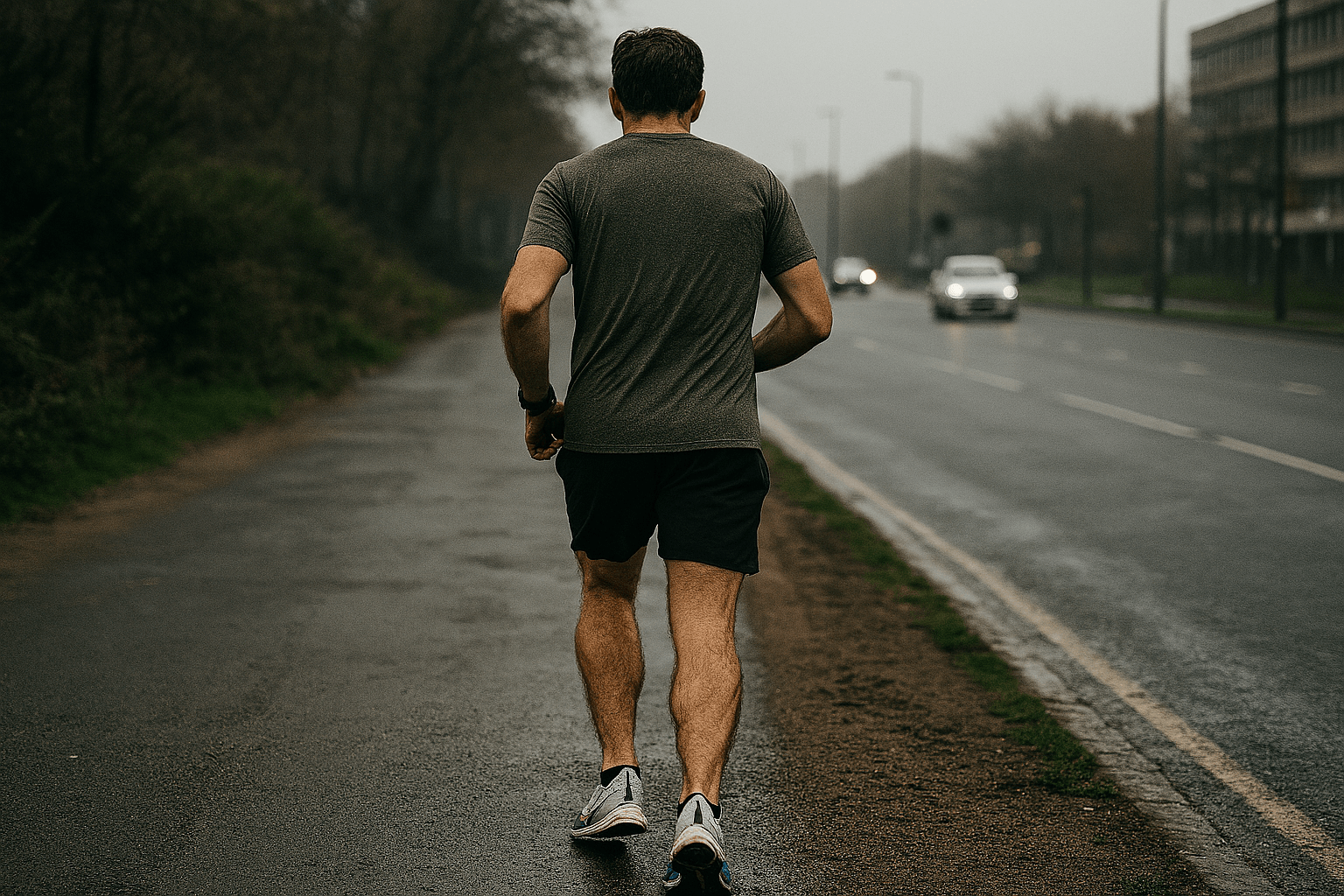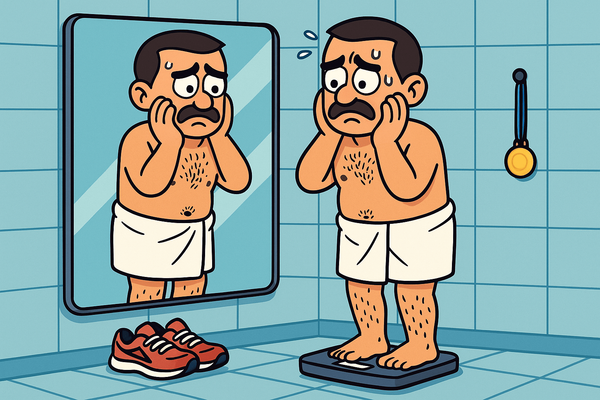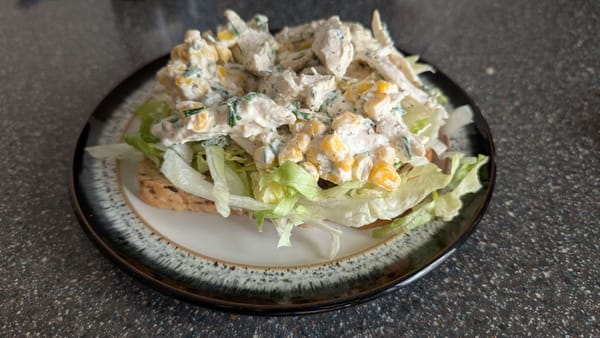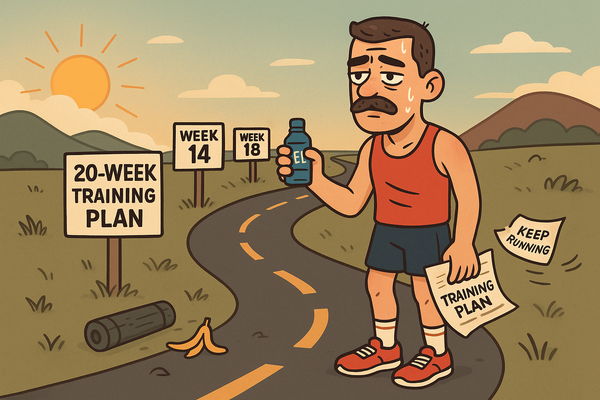Marathon training in your late 30s: what hurts and what works
How to adapt your mileage, recovery, and strength work to train smarter and avoid injury as you get older.

How to run a marathon with a protesting body
When I ran my first marathon, I was in my late twenties. I could knock back a few pints, eat a kebab and still get up for a long run the next day. It wouldn’t be a PB and I probably wouldn’t feel great, but I would do it. Try that today and I can guarantee you it would not be pretty.
Fast forward to my late 30s, and marathon training has taken on a very different meaning. The miles still get done, but prep and recovery now feels like a second full-time job. And instead of getting paid for the extra work, I am spending a small fortune on physio, yoga, reformer pilates and a healthy diet just so I don’t collapse and die mid-run.
This is an honest look at what actually changes after 35 — what hurts, what works, and how to run a marathon with a body that is starting to show its age.
Quick tips for surviving marathon training when you’re older
- Book in recovery time. You’re not as fresh in the mornings as you used to be without increasing your mileage. Be realistic with your training and accept that your body needs more time to recover.
- Stretch and strengthen as if you're injured. Dynamic warm-ups, stretching post-run and daily foam rolling and strength training is no longer optional.
- Reduce the volume, but keep the intensity. You still want to hit the mileage on your long runs, and your interval sessions can be even more intense when you reduce the volume. Consider 3 running days per week instead of 4 and bring in an optional non-running, aerobic workout like cycling or a HIIT class.
The brutal truth about recovery time
I didn’t really care about recovery time in my 20s, I was quite happy to run 25k on a Saturday and still go for a night out. Now in my late 30s that would mean three days in bed, feeling like I got hit by a bus made entirely of regret and craft beer.
I don’t think my recovery time has drastically increased, but I am noticing how much I need it now compared to my 20s. I simply can’t run the same amount and still go to the pub 3 nights a week, I have to consciously choose rest and carefully plan when I can have a pint without it destroying my training plan.
Injury prevention takes more time than running
The warm-up is no longer the first kilometer. That’s how you meet plantar fasciitis, runner’s knee, and their many friends.
Strength training, mobility drills, and proper warm-ups aren’t nice to have anymore - they’re the fine line between a solid training week and knee surgery followed by 6 months of rehab, and I swear I spend more hours on injury prevention than actually running.
What works:
- 5–10 minutes of actual warm-up before running. For me, that includes calf raises, glute activation and hip mobility, followed by lunges, cossack squats and high knees.
- Daily strength and mobility drills. Yes, daily. A good place to start would be foam rolling every muscle in your legs, you also want to incorporate some strength exercises tailored to your body. Daily glute work is a must for me personally.
- Heavy strength training at least once a week. Focus on your compound lifts: squats and deadlifts and the dreaded Bulgarian split squat.
Can you still beat your marathon PB in your 30s?
I am in much better shape now in my late 30s than I was in my 20s: I was overweight, a heavy smoker and clinically depressed - not exactly the ideal setup for marathon training.
My first marathon took 5 hours and 30 minutes — a glorious shuffle powered by nicotine, rage, and poor life choices. A year later I managed a 4:30. And now, ten years on, I have this absurd idea in my head that I should hit 3:30 — not because I’m suddenly athletic, but because it would make a very satisfying numerical pattern. Is it realistic? God no. But symmetry is important, even if my plantar fascia disagrees.
Being a little fat kid and living an unhealthy lifestyle in my 20s has its perks: beating my PB is perfectly reasonable in my late 30s. Of course, your story might be different, but science is on our side: marathon times stay largely flat through your early 20s to mid-30s, only starting a slow decline after that — meaning a PB in your 30s is still very much on the cards.
Should you run when you're in pain?
Training simply hurts more now. The pain isn’t always dramatic or interesting, but it’s persistent. Calves that won’t loosen. Hips that mutter threats. Heels that feel like you’ve stepped on Lego, emotionally and physically.
I’ve come to accept that this background hum of pain is just part of it. It’s not a signal to stop (most of the time), I think of them as a reminder that your body is still alive - sometimes barely, and with a bit of attitude.
Of course, there’s a difference between productive pain and "something-is-broken" pain. You learn to spot it:
- DOMS = fine
- Random knee stabs = maybe rest and spend more time on the foam roller and hope it goes away
- Morning foot pain = this could be trouble, but you can still run with plantar fasciitis
You don’t push through everything. But you also don’t give up every time something twinges. If I waited for a completely pain-free week to run, I’d be waiting until I was dead. And frankly, I’d rather run in pain than lie on the sofa in existential dread.
How often should I run per week in my marathon training?
Most training plans recommend 4 or 5 runs per week, and for some people that’s probably great. For me, it’s a big no-no. 10 years ago, I could run 4 days per week and feel great: that has now been reduced to 3 days. I can still do the distance, I can run even faster and my interval sessions are far more intense, but I simply can’t hit the same kind of volume without compromising my legs and my sanity.
My sweet spot is 3 days of running, with one optional extra non-running aerobic workout: think cycling, or a HIIT class, or anything else you might enjoy that has lower impact than running.
Older. Achier. Still going.
You’ll train harder some days and rest harder on others. You’ll spend more time warming up, foam rolling, strengthening your glutes, and planning your weekends around long runs and early bedtimes. And yes, your knees will make new and exciting noises.
But somehow, you might enjoy it more. Because once you stop chasing what you used to be able to do, you get to enjoy what you’re still doing. Still running. Still surprising yourself.
And still wondering if your knees always made that noise.





